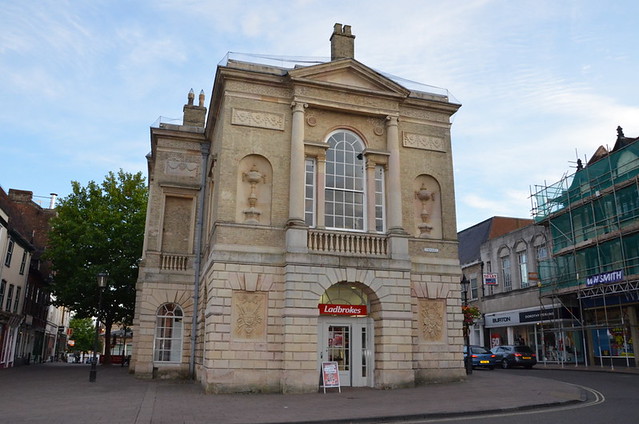
Bury St Edmunds, Suffolk
Category: The Great Town Award 2012
Assessor: Bob Young
Date of Visit: 2011
Learning Moments
2. The town has outlined planning and development guidelines in a masterplan that promotes brownfield development of former gas and railway sites in five strategic growth locations with the aim on integrating the peripheral suburbs into the core
3. Within the town core there is ample evidence of civic pride, exemplary stewardship, beneficial exploitation and popular enjoyment of the public realm, exemplified in a town visioning process facilitated by the Prince’s Foundation that has informed a new streetscape strategy, rebalancing the relationship between pedestrians and vehicles, encouraging street activity, pavement widening, traffic management, and the suppression of unnecessary signage
4. The commercial vitality of the town derives from the town centre whose businesses and public realm benefit from effective town centre management across a recently established Business Improvement District
5. A recently revitalized town council, in concert with a wide range of community groups and voluntary organizations, has provided an integrated inclusivity of social and environmental concerns
Assessment Summary
Bury St Edmunds is today a settlement rich in heritage, in colour, in vitality and in self confidence. Far from the kind of self confidence that belies a smug complacency however, Bury’s is purposeful and optimistic, a town launching itself with self assurance into the challenges and opportunities of the 21st Century. Nonetheless as Ronald Blythe put it, “Bury, twice in its history, has been the centre of a far greater world than it knows today”. He was of course referring first to the time when, as one of the most important shrines in Christendom, its semi-regal abbots inherited most of the remaining privileges of the ancient East Anglian kingdom, and again when, in Georgian times the town became Suffolk’s Bath.
It is thus largely from the 11th century “grid” of Abbot Baldwin and the buildings and facades of the 18th century that the town derives much of its character. Indeed the rectilinear grid that extends from the monastery gate up Angel Hill, worthy of any bastide, has in the last four years been successfully extended across the former cattle market site by the Arc/Apex mixed retail/residential development and performance venue. But Bury’s ambitions extend further, with planning guidelines in place for Brownfield former gas and railway sites and Masterplans anticipated for some five strategic growth locations.
Within the town core there is ample evidence of civic pride, exemplary stewardship, beneficial exploitation and popular enjoyment of the public realm which is aligned with responsible and imaginative celebration and use of as rich a collection of fine buildings as can be found in any UK market town. The photo gallery of “movers and shakers” in the Apex records the events around the “town visioning” process facilitated by the Prince’s Foundation which has informed a new Streetscape Strategy which builds on two decades of investment in rebalancing the relationship between pedestrians and vehicles, encouraging street market activity and residential use above shops. Pavement widening, traffic management and the suppression of superfluous signage has enhanced the attractiveness of the commercial and cultural offer in the town core and stimulated the growth of additional successful businesses along colourful, flower- bedecked streets.
The commercial vitality of the town derives not only from the town centre whose businesses and public realm benefit from effective town centre management across a recently established Business Improvement District; but also from myriad large, medium, and small employers, some like the Greene King brewery, close to the core, others like the huge British Sugar plant on the periphery. Technology and higher education also have a major footprint in the town as does the public sector whose pioneering West Suffolk House has achieved BREEAM excellent ranking. Here both Borough and County officers offer comprehensive access to services which are complemented at 7, Angel Hill by a recently revitalised Town Council and across the town by a wide range of community groups and voluntary organisations providing the warp and weft of inclusivity and social and environmental concern. Outlying neighbourhoods currently benefit from sustained investment in public transport connectivity and there is every indication that with time the successful development of the strategic growth locations will further integrate the peripheral suburbs and their people with the stunningly successful core.
It is evident that a wide cross section of society enjoy the town centre and the extensive Abbey Gardens, an outstanding urban park, whose popularity with teenagers in no way deters elders and families with young children. Nowton Park, a little further out, is also well used along with Hardwick Heath and Spring Lane. These extensive amenities for residents, workers and visitors are complemented by wildlife corridors and flood meadows providing protected habitats in close proximity to the town centre.
So long as the people of Bury St Edmunds continue to cherish their past, celebrate their achievements, and exploit their town’s potential for beneficial change and inclusive growth, Bury will remain at the leading edge of creative urbanism.